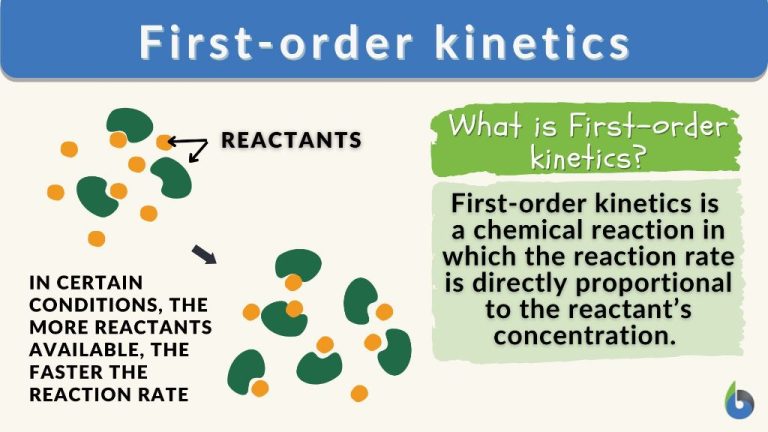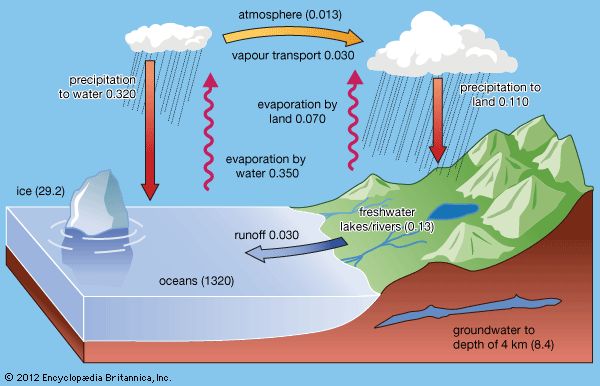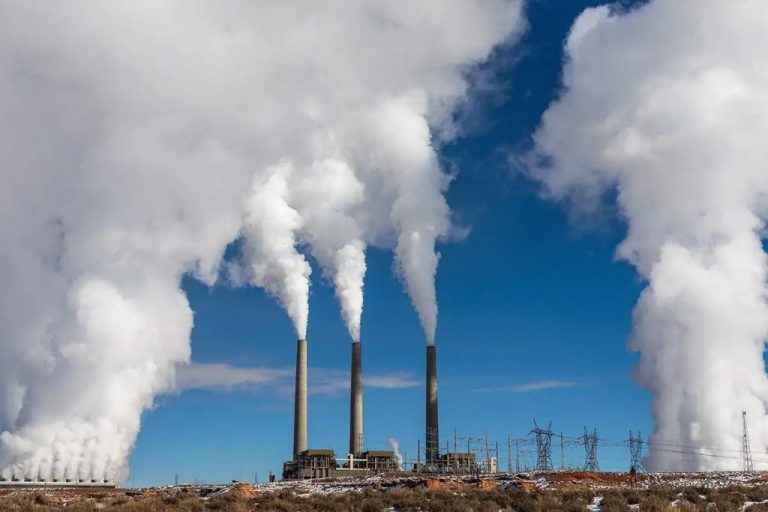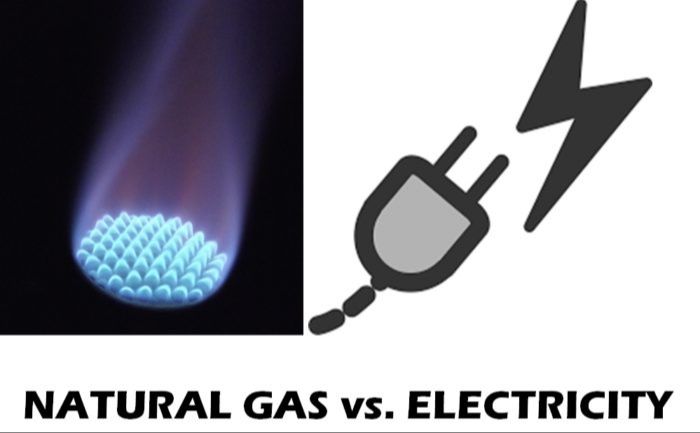What Occurs When Energy Is Transferred?
Forms of Energy
Energy comes in many different forms that can be categorized into types. The main forms of energy include:
- Chemical energy – The energy stored in the bonds between atoms and molecules. Examples include fossil fuels, biomass, and foods.
- Radiant energy – Energy that travels in the form of electromagnetic waves. Examples include visible light, ultraviolet light, infrared radiation, radio waves, and X-rays.
- Thermal energy – The internal energy of substances resulting from the motion of atoms and molecules. Often referred to as heat.
- Mechanical energy – The energy associated with the motion and position of an object. Examples include kinetic energy and potential energy.
- Electrical energy – The energy from the flow of electric charges. Examples include the energy in batteries, lightning, and electric current.
- Nuclear energy – The energy stored within the nucleus of an atom, released during nuclear reactions. Examples include nuclear power plants and radioactive decay.
Understanding the different forms energy takes is important when examining how energy transfers and transforms between systems.
Law of Conservation of Energy
The law of conservation of energy states that energy can neither be created nor destroyed, only transformed from one form to another. This means the total energy in an isolated system always remains constant.
For example, when a ball drops, its potential energy is transformed into kinetic energy as it falls. The total amount of energy before and after the drop remains the same. Energy is just changing from potential to kinetic. This principle applies across all energy transformations.
Whether energy takes the form of motion, heat, light or sound, the total quantity of energy never changes. It only gets converted between various forms. This is why energy is seen as conserved – the net energy in a system doesn’t increase or decrease, it just gets converted between different types.
The law of conservation of energy is considered one of the most fundamental laws in all of physics. It allows us to track energy transfers and transformations during physical and chemical processes. We know the energy has to go somewhere, it doesn’t just disappear. This law enables a wide range of scientific and engineering applications.
Energy Transformation Examples
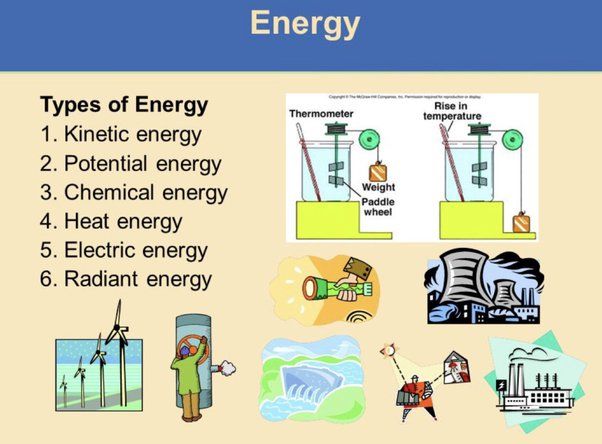
Energy can change from one form to another during energy transfer. Some common examples of energy transformations include:
Chemical to Thermal Energy: The chemical energy stored in fuels like gasoline, natural gas or wood is converted into thermal energy during combustion. For example, when gasoline burns in a car engine, chemical energy is converted into heat and light. The thermal energy from combustion provides the power to propel the car.
Mechanical to Electrical Energy: Mechanical energy can be transformed into electrical energy through electromagnetic induction. For instance, wind turbines and hydroelectric generators contain coils of wire that spin inside magnetic fields. As the mechanical energy of the spinning coils cuts across the magnetic lines of force, it induces a flow of electricity. The kinetic energy of wind/water is thereby converted into usable electrical energy.
Radiant Energy to Chemical Energy: Plants are able to absorb radiant light energy from the sun and convert it into stored chemical energy through photosynthesis. The radiant electromagnetic waves are transformed into chemical potential energy within sugar molecules like glucose. This stored chemical energy can later be used as food by animals and humans.
These examples demonstrate how energy is continually being converted from one form into another during energy transfer processes. The overall amount of energy remains conserved, even as energy shifts among different types like mechanical, thermal, radiant, electrical and chemical energy.
Energy Transfer Mechanisms
When energy is transferred from one place to another, it changes form through various mechanisms. The main mechanisms of energy transfer are heat, work, and waves.
Heat is transferred via conduction, convection or radiation between objects that are at different temperatures. In conduction, heat transfers through direct contact between materials as kinetic energy is exchanged between their particles. Convection involves the transfer of heat by the movement of fluids. Radiation happens when electromagnetic waves carry heat energy through space.
Work is transferred when a force causes an object to move through a distance. This transfers kinetic and potential energy between objects through interactions like pushing, pulling or lifting. For example, chemical energy in muscles is converted into work and kinetic energy when lifting an object upwards.
Waves like sound and electromagnetic radiation can transfer energy between oscillating particles. As the waves propagate, they carry energy through a medium via the coordinated motion of the particles. Different types of waves transfer different forms of energy.
Heat Transfer
Heat transfer is the process of energy transferring between objects or systems due to a temperature difference. There are three main mechanisms of heat transfer:
Conduction
Conduction is the transfer of heat between objects that are in direct contact with one another. It occurs when faster moving particles collide with slower moving particles, transferring kinetic energy. Metals are good conductors of heat because their free electrons can easily transport thermal energy.
Convection
Convection is the mode of heat transfer between a surface and a liquid or gas in motion. It occurs due to the bulk movement of molecules within fluids. Heat is transferred by the actual motion of the warmer molecules. Convection can be natural, driven by temperature differences and gravity, or forced, via fans or pumps.
Radiation
Radiation is the emission of heat in the form of electromagnetic waves or photons. No direct contact between objects is required for heat transfer by radiation. All objects emit thermal radiation related to their temperature. Radiation can travel long distances through transparent media like air or vacuum. Examples include heat from the sun warming the Earth and infrared heaters.
Work and Power
When a force causes an object to move, work is done on the object. Work occurs when an applied force moves an object over a distance. The amount of work done is equal to the force multiplied by the distance moved.
Work can be calculated using the following equation:
Work = Force x Distance
The units for work are joules (J) in the SI system. One joule is equal to the work done when a force of one newton moves an object one meter.
Power is defined as the rate at which work is done or energy is transferred. Power can be calculated by dividing the amount of work done by the time taken.
The equation for power is:
Power = Work / Time
The SI unit for power is the watt (W), which is equal to one joule per second. Power measures the rate of energy conversion or transfer. The greater the power, the more rapidly work is done or energy is transferred.
Understanding work and power is important for analyzing mechanical, electrical, and other systems that involve the transfer of energy.
Wave Energy Transfer
Wave energy transfer involves waves moving energy from one place to another without actually moving any matter. There are two main types of waves that can transfer energy: mechanical waves and electromagnetic waves.
Mechanical waves, like sound waves or water waves, require a medium in order to transfer energy. The wave causes oscillations in the particles of the medium, which passes the energy along. For example, in a water wave, the water molecules bump into each other, transferring the energy from one molecule to the next. Mechanical waves cannot travel through a vacuum since there are no particles to oscillate.
Electromagnetic waves, like visible light, ultraviolet rays, infrared radiation, radio waves, and X-rays, can travel through a vacuum. They do not require a medium to transfer energy. Instead, electromagnetic waves are disturbances or variations in electric and magnetic fields that are able to radiate energy as they travel through space. This allows electromagnetic waves to transmit energy even when there is no matter present.
Energy Loss and Degradation
When energy is transferred or transformed, some energy is inevitably lost in the process. This energy loss occurs due to friction, resistance, and inefficiencies inherent in real-world systems. There are several ways in which energy can degrade or dissipate:
– Friction: The friction between moving parts causes some mechanical energy to convert into heat, resulting in energy loss. For example, friction in car engines and bicycle chains leads to loss of useful work and heating of the parts.
– Electrical Resistance: The resistance to electron flow in wires leads to energy loss in the form of heat. This is why transmission lines get warm when electricity flows through them.
– Sound and Vibration: Kinetic and potential energy can dissipate into sound waves and vibrations, like the energy loss into noise in car engines.
– Thermal Interactions: Heat will spontaneously flow from hotter to colder objects until equilibrium is reached, resulting in loss of usable thermal energy.
– Turbulence: The chaotic motions in turbulent fluid flow lead to increased drag and kinetic energy being converted into heat.
– Chemical Reactions: Exothermic chemical reactions result in some energy being lost to the surroundings as heat.
– Light Emission: Energy transitions in atoms result in the emission of photons, leading to energy loss in the form of light.
– Inefficiencies: Real-world systems have inherent inefficiencies that result in less work or heating rather than 100% conversion of energy into useful output.
Understanding these mechanisms of energy degradation allows engineers to design better systems that minimize unwanted energy loss and maximize efficient energy transfer and transformation.
Real-World Applications
Energy transfers occur constantly in the machinery and devices we use every day.
In power plants, chemical energy stored in coal, oil, natural gas, or uranium fuel is converted into electrical energy through combustion or nuclear fission. The electrical energy is then transferred through transmission lines to homes and businesses.
In car engines, chemical energy in gasoline is converted into thermal energy through combustion in the cylinders. This thermal energy creates high-pressure gas that pushes the pistons, transforming the energy into mechanical energy that turns the wheels.
In electric circuits, voltage sources like batteries transfer electric potential energy to electrons in the wires, creating an electric current that powers devices. The electrons lose energy as they encounter resistance in the wires, converting it to light, heat, motion, or other forms.
In solar cells, radiant energy from sunlight is converted into electrical energy through the photovoltaic effect. The electrical energy can then power equipment or be stored in batteries for later use.
In all these examples, energy is transferred from one form into another useful form to perform work. The processes involve energy transformations governed by the laws of thermodynamics.
Conclusion
Through this discussion, we have seen that energy is constantly undergoing transformations between different forms. Energy can transfer from one object or system to another through work, heat, or waves. We explored a variety of examples of energy transfer and transformation in everyday life, from the operation of a simple motor to the complex energy dynamics in a thunderstorm.
One of the most important takeaways is that according to the law of conservation of energy, the total amount of energy in a closed system always remains constant. Energy is never lost, but it may become less usable through transfers and transformations, as we observed with the degradation of useful energy into thermal energy and noise. While energy often changes form during transfer between objects or systems, the energy within the overall closed system is conserved.
Understanding energy transfer and transformation processes allows us to better harness, utilize and manage energy resources for human needs. The principles of energy conservation and transfer have far-reaching implications in science, engineering and technology that enable innovations to improve quality of life.


